
Grow It Yourself: Raised Vegetable Gardens
Published: 23/03/2023 | Updated: 10/09/2023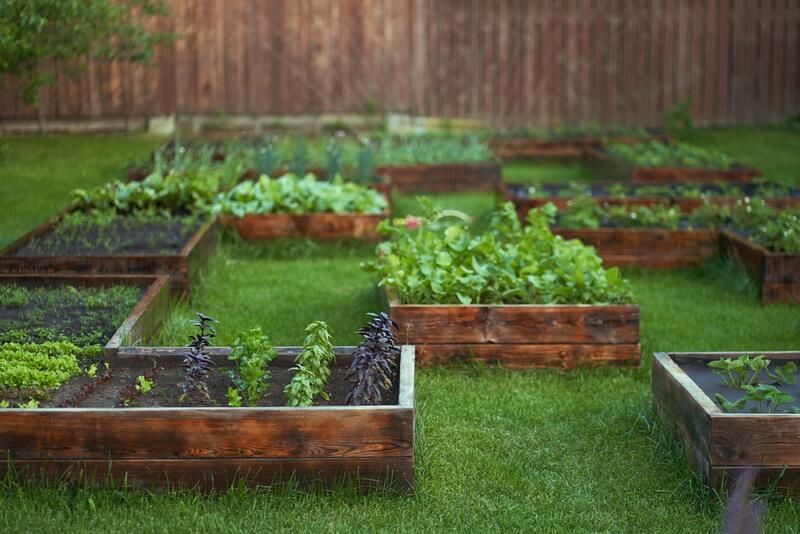
This is it. This is the only list you'll ever need when it comes to raised vegetable garden beds; ignore all the others you've found the gold mine!


For gardeners everywhere, raised beds to provide several solutions and larger-scale container growing simplicity. Raised beds come to the rescue if your soil is less than ideal. little room? It can be improved with one or two strategically positioned raised beds. Not to mention that they can be produced using a variety of materials.
What is a Raised Garden Bed?
Growing plants in soil that is higher than the ground is known as raised bed gardening. The most popular way to do this is with a frame or enclosure made of wood, stone, hay bales, or even recycled materials like old dressers.
Why You Need a Raised Garden Bed
Many advantages come with raised beds, including improved soil drainage, deeper plantings that require less bending over, and the ability to remove temporary constructions if you decide against maintaining them. The benefits are as follows:
-
Easier on any gardener's back
-
Looks fantastic.
-
Fewer incursions of pests
-
Enhanced drainage
-
Fewer weeds
-
More favorable soil temperatures
-
Less worry about soil pollution, whether it's temporary or permanent.

Types of Raised Garden Beds
Before going shopping for one, you must choose the type of raised garden bed that is best for you and your outside space. Raised ground beds, supported raised beds, and containerized raised beds are the three different forms of raised garden beds. All three are involved to raise plants and their root systems above ground.
Raised Ground Beds
Raised ground beds are unsupported, flat-topped mounds of soil that are 6 to 8 inches high. Since they simply need soil, they are the most basic alternative for above-ground gardening. They are also known as built-in raised beds. Experts pointed out that they're especially helpful for gardeners who have extensive planting spaces but do not want to incur the additional cost of constructing support frameworks.
A Containerized Raised Bed
When most people think of raised garden beds, they often envision containerized ones, according to experts. They are big pots or plants. Raised beds in containers can be utilized on lawns, walkways, decks, patios, driveways, and porches since they have higher sides and a foundation. We advise making sure the location where the raised bed would be placed can support its weight and any moisture it may emit. Most experts point out that containerized raised beds are adaptable and useful in high-traffic areas, although you might need more soil to fill one.
Supported Raised Beds
Raised beds with support consist of a dirt mound encircled by a frame or supportive edge. According to experts, these beds are particularly helpful for sloped or uneven land since they allow you to construct a level surface on top of an uneven one.
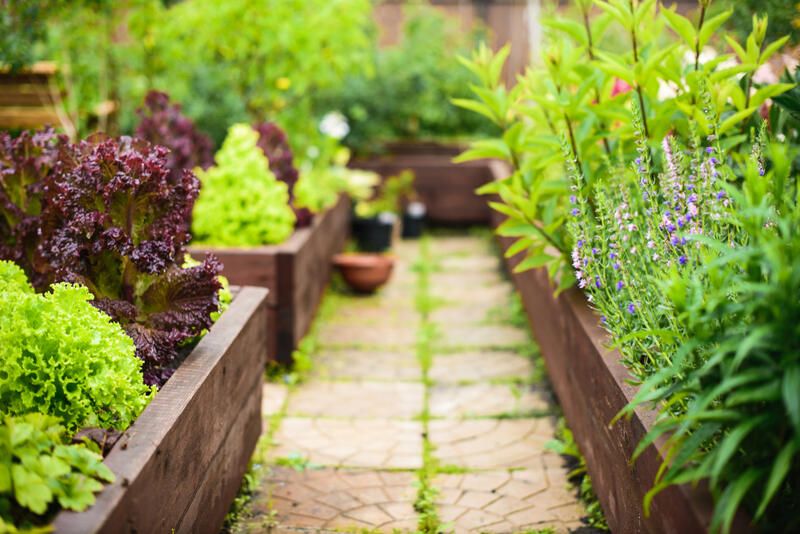
What Can I Use for Raised Garden Beds?
Brick, stones, or recycled materials can be used to make raised beds that are as simple or artistic as you wish. For plants to establish themselves and mature, a raised bed planter can be either a temporary or permanent installation. The initial cost will vary depending on how complicated you construct your raised bed. If you create raised beds from leftover bricks or old planks, you can do it for little to no cost. Raised beds don't cost any extra to maintain once they are built than conventional gardens.
The foundation material you use will depend on whether you want it to be a permanent or temporary bed. Cardboard, newspaper, concrete, straw, mulch, wood shavings, leaves, grass clippings, rock, burlap, wool, landscape fabric, and plastic are some common materials used for the basis of raised vegetable beds. To prevent water from pooling or making the soil wet, line the bottom of a large, raised bed with large stones, plastic bottles, or straws. The bottom of your raised bed planter should have drainage holes planned.
Although it is not necessary to line a planter, whether it be made of brick or not, doing so is advised since it prevents animals from digging up the roots of your plants and provides for effective drainage without letting the soil wash away.
What to Grow in a Raised Garden Bed?
The answer is simple, whatever you want!
Go ahead and plant a 700-pound pumpkin in your raised bed. Just be aware that might be the only growth you experience. And I hope your bed is solid. Raised bed gardening is similar to other things in life in that you shouldn't always do something just because you can. Although you may grow almost everything, some veggies are more suitable for this gardening style than others. Naturally, some plants would flourish in a different environment.
Although you may grow almost everything, some veggies are more suitable for this gardening style than others. Naturally, some plants would flourish in a different environment. The only thing you need to remember is that you can still grow the vegetable even if it isn't on this list or is listed under the section of the list that says, "not suited for raised beds."
This list's goal is to provide you with the best plants for raised bed gardens so you can make the most of your available area. It all comes down to what will work best for you and your changing needs in the end.
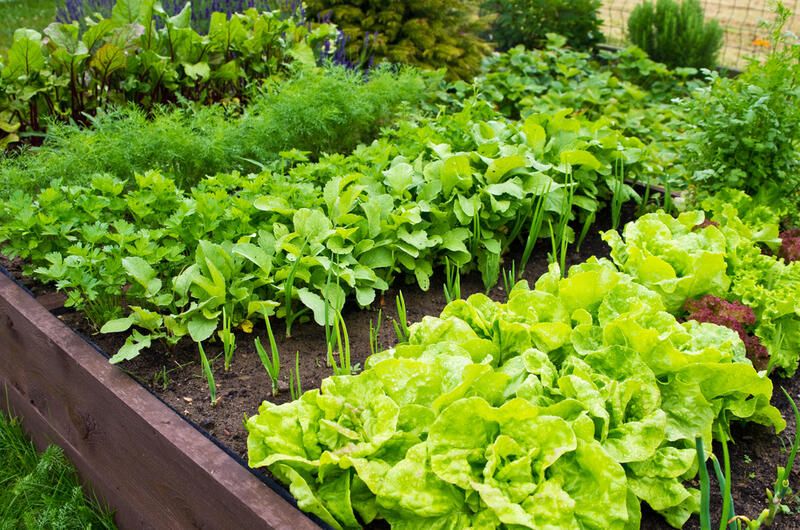
The Top Vegetables to Grow in Raised Garden Beds
Peppers & Eggplants
These two nightshade family members are excellent complements to your raised beds. In addition to the obvious benefit of their small size, peppers and eggplant grow well in raised beds for another reason.
Before plants settle in and begin to produce, both peppers and eggplant require warmer soil temperatures. You'll be able to enjoy baba ghanoush and pepper slaw before your neighbors since, generally speaking, the soil in your raised beds will warm up faster than the surrounding ground temperature.
All your guests will be beaming with jealousy.
Root Vegetables
Raised beds are perfect for growing root vegetables. Root vegetables are notoriously difficult to cultivate, as anyone who has tried and failed to grow carrots to any respectable size can attest. If radishes feel even slightly confined, they will continue to be spindly.
Root crops can be challenging to grow in the ground when hampered by pebbles or excessively compacted soil. This ceases to be a problem because most raised beds use bagged soil mixtures, or at the very least a combination of compost and good soil that has been screened. There are only exemplary, high-quality soils; there are no rocks, clay, or earth that are as hard as cement.
Carrots are the one exception; if your raised beds are only 8" deep or less, you'll want to select short and compact cultivars like Danvers or Oxheart. The sky is the limit, though, if you have raised beds that are 12" or deeper!
In raised beds, radishes, turnips, rutabagas, beets, and carrots all grow incredibly well. (I recommend trying these Kyoto red carrots; they're my fave! They become more crimson as the temperature drops.)
Onions, Garlic & Leeks
Members of the allium family are ideal tenants in a raised bed because they are small and another essential in every kitchen.
We encourage you to think outside the box when it comes to growing onions, garlic, and leeks in your raised beds. Given that we're talking about growing vegetables in big boxes, we realize it's a lot to expect. However, we frequently come to believe that crops must be cultivated in a tidy row or square.
These three vegetables may be smuggled into any space because of their small footprint. Try nestling your bulbs anywhere you find a few extra inches in your beds, rather than having a specific location in your raised bed for these plants.
Just keep in mind that sage, beans, peas, asparagus, and onions should not be planted together.
Leafy Greens
Greatly sed bed crops include Swiss chard, kale, lettuce, spinach, and other greens. You can fit a lot of these greens into a small area because almost all of them keep a modest footprint in raised beds. To get the maximum growth for your money out of your garden, remove the cooler season varieties once they are done growing and plant another crop in their place.
Do not overlook bok choy, mustard greens, or other delectable Asian greens. All of them are nutrient-dense, simple to cultivate, and will prosper in your raised beds.
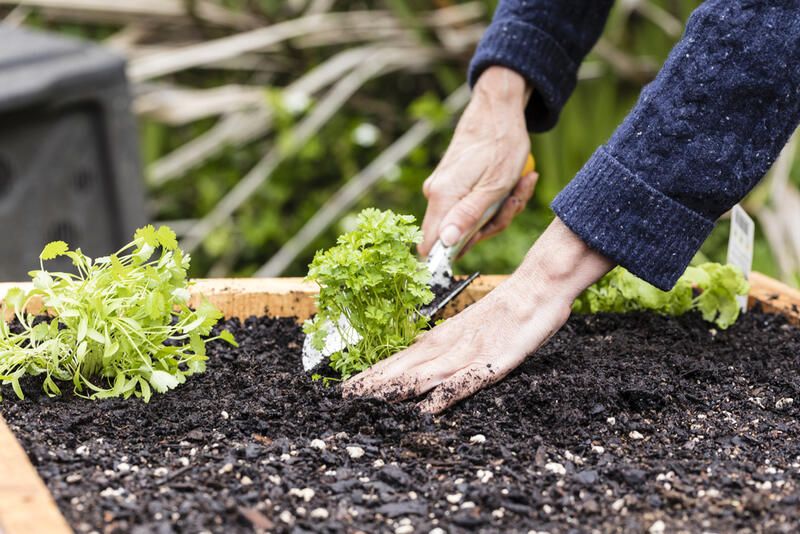
Beans
Bush beans and vine beans do well in raised beds. However, you'll need to provide climbing beans with something to climb if you want them to flourish.
Bush beans keep very compact, which makes them a perfect addition to your raised beds in contrast to their vining siblings, which can quickly get out of control. Also, remember to space out the planting of the beans so that you have a continuous supply rather than a bumper crop all at once.
When one crop, such as lettuce, is over or after you've picked out your radishes, you may easily plant a bean. Keep in mind that not all of our rows and boxes need to be nice and organized like your space as effectively as possible.
Cucumbers
There are two varieties of cucumbers: bush and vine. Unbelievably, vining cultivars work fantastically in raised beds.
Your cucumbers will cheerfully climb if you give a trellis framework, which may be as elaborate as plumbing tubing fastened to the edge of your raised bed or as basic as a few twigs driven into the ground and some rope. This will take up very little space in your bed.
Plant the cucumbers quite close to the trellis' edge and train them to climb it. Growing cucumbers vertically not only takes up less space but also makes it simpler to find them.
Peas
Do you recall the trellis we constructed for our cucumbers? Create another, and you'll have the ideal location for a patch of delectable, vibrant green peas.
You may train peas to grow up most of the space they take up in a garden, giving you plenty of room to grow the rest of your vegetables. Plant a crop in the spring and another one in the fall when the weather begins to chill.
Getting Professional Advice
You might be wondering with all the logistics involved in raised garden beds if you need to get a professional involved. The answer is both yes and no. Depending on if you want to go big when it comes to your raised garden bed, you might want to get a professional's opinion since you can't move it once you place it.
Making this sort of commitment can be a bit risky, especially if you're unsure or you're feeling overwhelmed with all your choices. One of the best things you can do is design your backyard on a 3D design program so you can try out a bunch of options. Shrubhub.com does a fantastic job at this.
They're currently doing a 70% off sale along with a free phone and plant consultation so you can ask all the questions you want without having to commit to anything. We would recommend giving them a try.
Okay, now back to more raised garden beds.
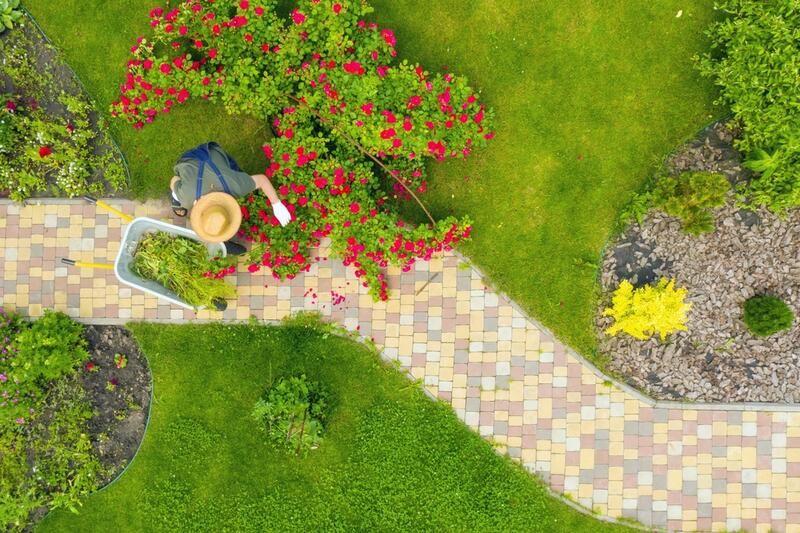
Raised Garden Bed Ideas to Spice Things Up
Custom-Designed Raised Garden Beds
Practically any location may accommodate raised bed gardens. You may design a full outdoor seating area with a little imagination. Consider building a raised bed with multiple levels and basic straight lines. It can be finished off with a lamppost and potting shed. You can create seats for the outside dining area by adding a bench piece, similar to the one at the end of the front bed. This garden will seem natural and rustic as the plants mature and the wood ages.
Arbor Raised Bed
You can grow more plants by using vertical gardening, which uses less room. It is considerably simpler to pick vegetables from a raised bed when using a trellis or arbor, and they stay more orderly than if they were left to spread on the ground. This raised bed of zucchini plants demonstrates how your design can be as straightforward as building a fundamental frame out of two dowels (or bamboo poles). Garden netting spread across the trellis frame may be advantageous for other crops.
Trough Raised Beds
Using animal feeding troughs is one of the simplest ways to build raised bed gardens. There is no assembly required, however before adding soil, make sure to drill a few drainage holes at the bottom. As it conducts heat, the metal gives the garden an industrial appearance and warms the soil in the spring.
Depending on the style you want and what is available, you can use either new or old troughs. The plants may require a little additional water throughout the warmest portion of the summer depending on what you decide to grow.
Built-In Brick Raised Garden Beds
Raised beds made of red brick can improve the look of your backyard or farm. Instead of digging an in-ground bed, construct a raised bed where the sun or shade would benefit the plants you wish to grow.
Not everyone is suited to bricklaying. To get it correctly, a lot of time and accuracy is required. Select bricks that can withstand persistent moisture well. The majority of raised red brick beds are constructed using mortar to preserve the walls.
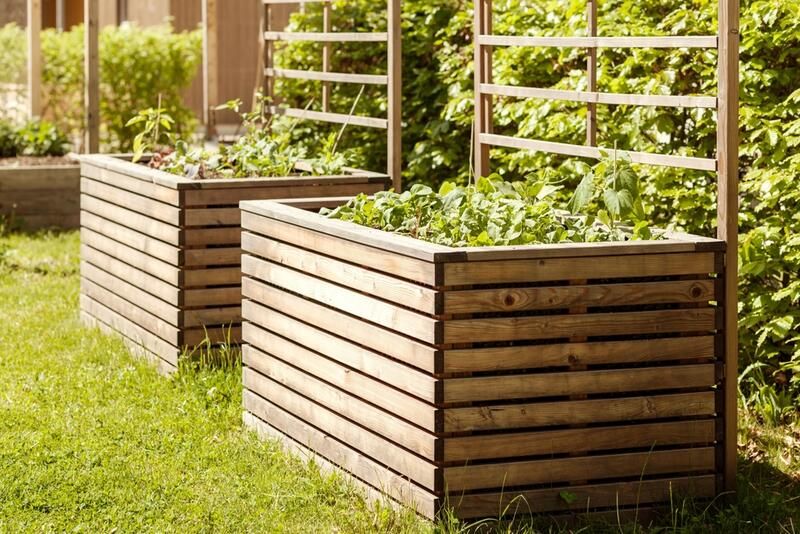
Flower Boxes for a Raised Bed
Limited options exist for raised beds. If your fence is robust, you can affix wooden boxes to it to use as little raised beds, similar to window boxes. These may maintain their attractive appearance all year long by stepping in as perennials stop blooming. As a special decoration idea for the winter holidays, you may also adorn these spaces with seasonal plants and ornaments.
Grow Bag Raised Garden Beds
Since raised bed gardens are located well above the subsurface frost line, the soil warms up more quickly in the spring, allowing you to begin planting earlier.
Your choice of bed material matters because metal retains more solar heat. However, grow bags are a fantastic alternative because their soil defrosts rather rapidly and they don't freeze solid. Furthermore, it is a fantastic technique to supply the heat required for Mediterranean plants like sage and lavender to develop. Although using grow bags might seem too simple, you might quickly have a fantastic, raised bed garden.
Container Designs
Maybe you want to add extra decoration and fullness to your brick-raised beds. You can play with different levels that lure the eyes up and down and allow for an almost infinite variety of sizes and shapes by positioning containers below the brick wall's level. You can even arrange your plantings to offer visual appeal throughout the entire year. Additionally, containers can be moved at any time to change the design.
Enclosed Raised Beds
Deer, rabbits, and other foraging or burrowing animals can quickly ruin your garden. Plan to enclose your raised beds if you live in a location where animal activity threatens to ruin your garden dreams. You may either build a proper enclosure with a door or start simply with 3-foot corner posts completely covered in chicken wire. The most important thing is to maintain the top open to allow birds to browse for seeds and, in the case of hummingbirds, nectar.
Avoid using a fine mesh to enclose a raised garden. Give insects that pollinate your plants, such as bees and butterflies, a chance to do so.
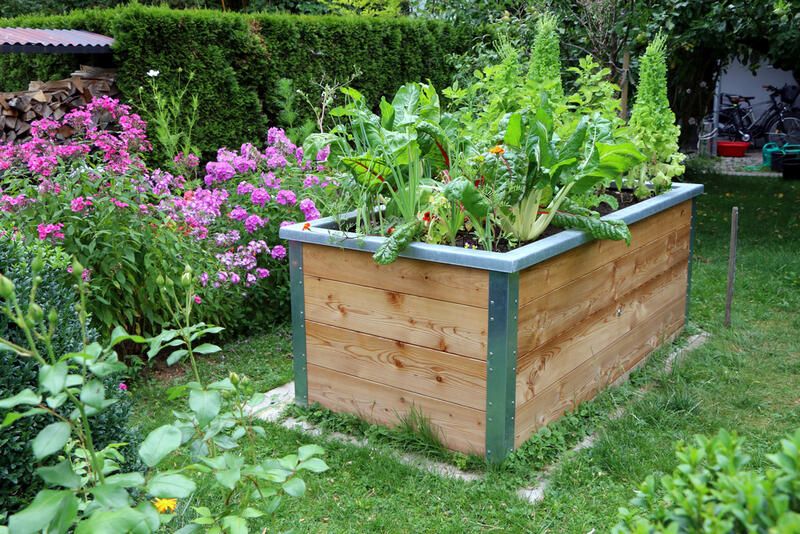
Brick/Cobblestone Beds
Consider dry-stacking rows of retaining wall bricks, red bricks, or cobblestones to construct a solid raised bed that can withstand the test of time. Wall blocks and cobblestones were durable enough for ancient Egyptians and Romans and have endured for millennia.
You don't need mortar, but if you use masonry glue to hold them together when stacking bricks more than four bricks (or levels) high, the construction will endure longer. Build a wall with an inner and outer layer that is two bricks or stones thick all the way around for added stability.
Cinderblock Raised Beds
Raised beds can be constructed in a variety of ways using recycled materials. One of the most common types is a concrete block, sometimes known as a cinderblock. The "cinders" left behind from burning coal, known as fly ash, may be present in some older cinder blocks. Whether this is safe to use among plants that can be eaten is still up for dispute. By purchasing fresh concrete-made blocks, you can get rid of the ash problem. Despite being significantly heavier than older cinder blocks, the new blocks are fine for a vegetable garden.
Concrete blocks, however, leech lime, so use caution. Lime can increase the pH of the soil. Use plants that do well in alkaline soil for safety. These robust succulents and sedums are suitable for these planters because they are hardy and are not picky about the soil.
Cottage-Core
In strategic, scenic locations, bench sitting is frequently incorporated into cottage gardens and thoughtful landscaping. When creating a raised box from scratch, take into account include seating.
While seating is great for relaxing in the yard, it also serves a useful purpose. The addition of chairs will make weeding, trimming, and other maintenance tasks easier to manage if you're building a wooden raised bed garden box that is several feet tall.
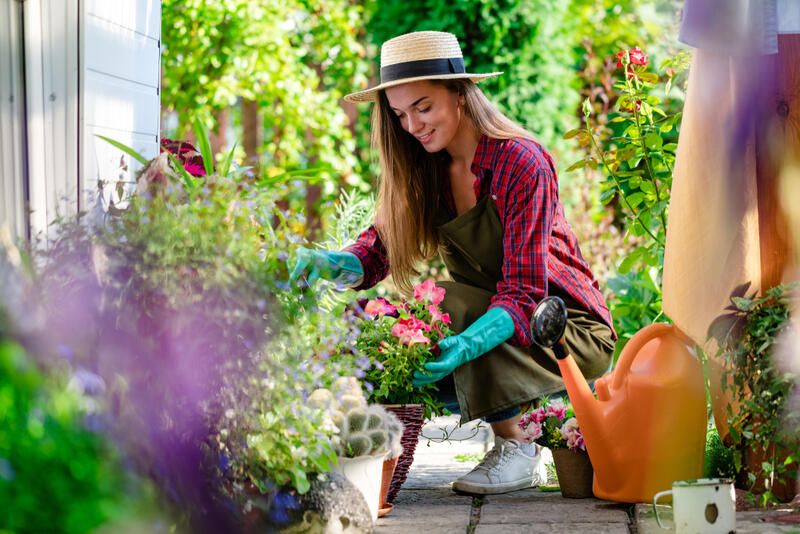
Herb Raised Bed with a Twist!
A common permaculture approach is spiral gardens. They expand the area that can be used for planting without taking up more garden space. They are simple to construct from materials like wood, stone, or brick, or you can just pile the earth.
Your garden's center point will be an eye-catching swirl of plants in an unusual shape. In this image, herbs are the preferred plants, however, the spiral pattern can be used to produce any type of plant.
Raised Bed Borders
A great alternative for yards with steep slopes is raised beds. You can provide the appearance of a level garden by raising the beds at their lowest points. Make your beds big enough to accommodate perennials that will offer color, texture, and edge-softening drapes while yet allowing for a layered flower garden with a border of shrubs framing the garden's rear. To take advantage of the garden's placement on a steep hill, it has a series of raised beds with rock borders.
Turn Old Furniture into Garden Beds
Tables appear to be designed to support a raised box that is filled with dirt. Older furniture items like dressers, a chest of drawers, media centers, mattresses and cribs, and baths destined for the trash are less obvious options. For many plant species, old drawers make excellent planters.
Space Saving Designs
Raised bed designs can be imaginatively used by gardeners with limited areas to maximize their resources. In this ingenious design, a wooden raised bed flower box constructed of salvaged materials is placed on top of the area where garbage bins are kept. This brightens up what is typically a dull location and adds beauty to a functional but utilitarian space. The decorations and string lights give it a unique touch.
Milk Crate Garden Beds
Your raised bed will be portable if you repurpose milk crates. You may alter this milk crate-raised bed into any shape you like, and it is simple to set up. Pick up the crate and move it if you need to move your plants closer to your kitchen or a more shady location. Drainage holes are already included in these containers. Additionally, you can raise the box, empty its contents into a compost pile, and start over whenever you need to switch the soil.
Pallet Garden Beds
Perhaps you want to give your brick-raised beds more decoration and richness. By placing containers below the brick wall's level, you can experiment with different levels that draw the eyes up and down and enable an almost unlimited range of sizes and shapes. Even better, you can organize your plantings to provide year-round aesthetic appeal. To adjust the design, containers can also be moved at any time.
Advice: Chances are if you find a pallet outside a business it is free. However, always ask before taking.
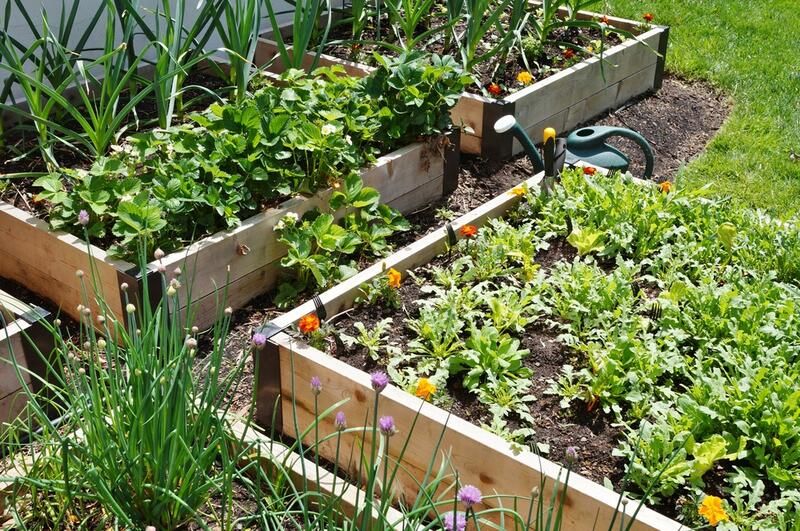
The Conclusion, Raised Garden Beds: Pros & Cons
The Pros
Raised beds can be utilized for several good reasons.
-
The garden appears tidier. The paths may be kept clean, and the walls hold the dirt in place.
-
They don't have to bend as much to work on the plants, but for those of us who are tall, a 12-inch wall doesn't do much good.
-
They can be used in locations with extremely contaminated soil, very little soil, or no soil at all. Little raised beds are containers.
-
In the spring, they warm up more quickly, enabling early planting.
-
They may be fantastic for those with disabilities.
-
You may match soil to crops by putting different types of soil in different beds.
-
Raised beds can improve drainage in locations with extremely poor drainage, but they can also exacerbate drainage issues.
-
Gophers and voles can be kept out by screening bottoms.
-
Prevents children and animals from walking on plants.
If you are careful, you may also accomplish this in a non-raised bed. Raised beds may assist concentrate nutrients like compost and fertilizer into the growth areas.
Note that none of these justifications include increased productivity, enhanced flavor, or enhanced nutrition. Raising the soil level and building walls will generate the same amount of food as growing in the ground if the same food is grown in the same kind of soil.
Better soil can be used on the ground as well as in raised beds, which may result in increased food production.
Raised beds are not the reason for greater output, which is claimed by methods like square-foot gardening. Instead, intense cropping is to blame. All of the intensive croppings are possible on level ground.
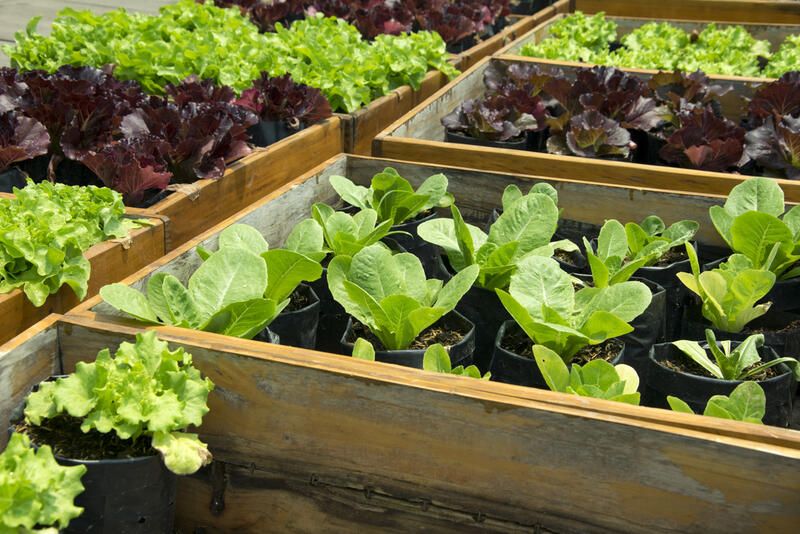
The Cons
With every pro, there's a con. Let's dive in:
-
Unless you have high sections in your yard that you desire lower, you must purchase dirt.
-
They are costly to construct.
-
In the heat, the soil dries out a lot quicker.
-
Calls for greater watering.
-
Less environmentally friendly because walls and soil must be purchased and moved.
-
Chemicals that seep from the material used to construct the walls are a source of considerable concern.
-
Except in the early spring, warmer soil is not favorable for roots.
-
Since a raised bed grows colder in the winter, perennials need to be hardier.
-
If you intend to utilize a wheelbarrow with taller walls, you must make the rows between the beds wider.
-
Installing drip irrigation is more challenging.
-
In the fall, soil cools more quickly.
An elevated bed probably hinders productivity. On the ground, a tomato plant's roots can go out many feet, but in a raised bed, the root system is constrained. In the summer, raised beds to dry up more quickly, and water becomes a yield-limiting factor. It is difficult to see how plants squeezed into a raised bed would produce as much food as plants in the ground, given adequate soil, the same quantity of fertilizer, and water.
Overall, Are Raised Garden Beds Better?
One of the first issues you could have when starting a garden for the first time is whether you should construct a raised garden bed or start your plants directly in the ground. We've gathered as much relevant data to aid you in making your selection because there are a lot of various aspects that could affect it.
Then raised garden beds are preferable to in-ground garden beds, right? Yes, but not always. Raised beds might be your best option if you live in a highly humid area or have very poor, compact soil. In-ground garden beds can be the best option for you if you live in an area that is frequently hot and dry and if your soil has a good structure.


